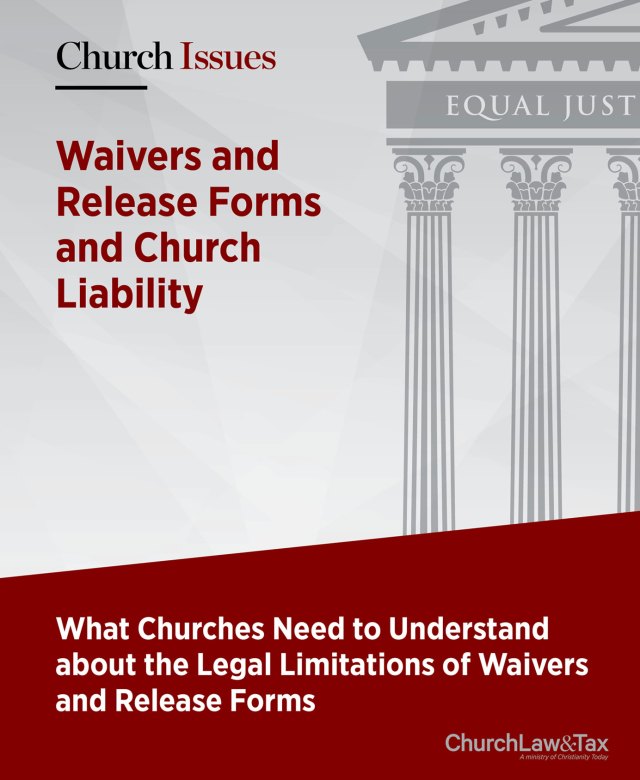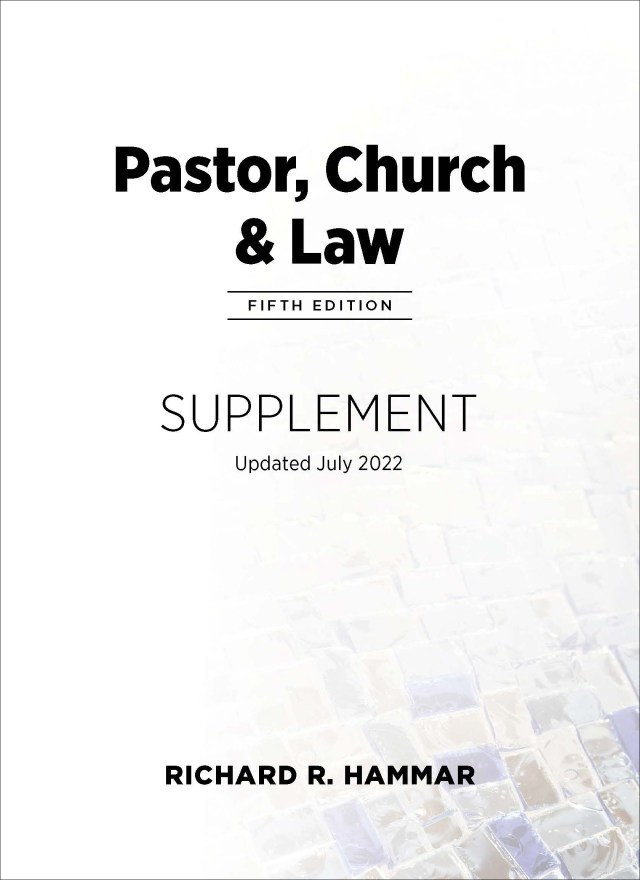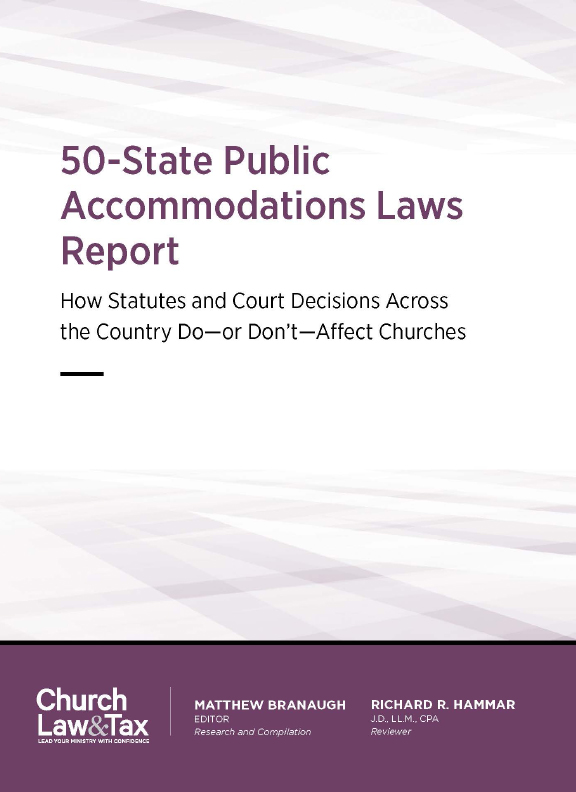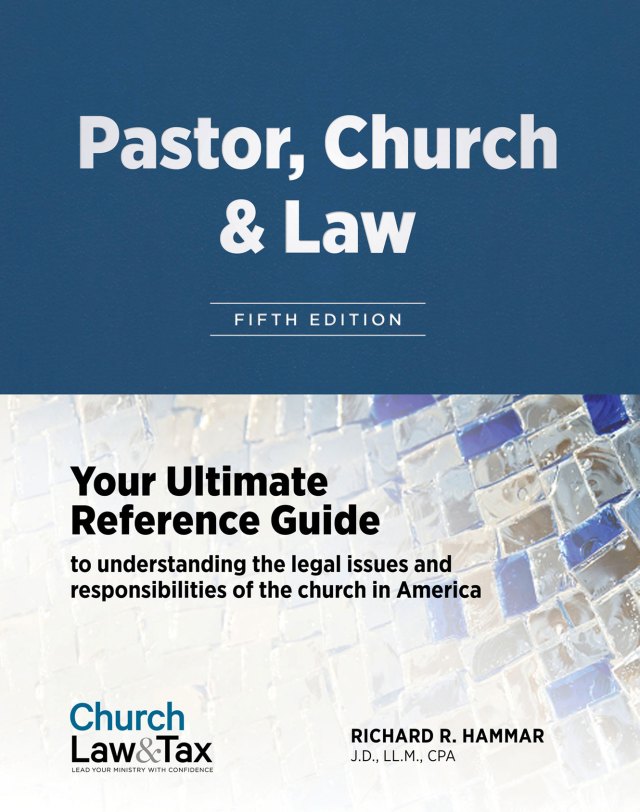• Key point: In some cases, “release forms” will not be recognized by the courts.
• A West Virginia appeals court refused to recognize a “release form” as a legal defense to an organization’s liability. Churches often have parents sign “release forms” that purport to release the church from any legal liability for injuries occurring to children during church activities. These forms are used for a variety of activities, including camping, boating, hiking, and swimming. Are these forms legally valid? Will they be recognized by the courts? Not necessarily, as is illustrated by a recent court decision in West Virginia. A young woman went whitewater rafting as paying passenger on a raft owned and operated by a commercial outfitter. During the trip, the guide who was operating the raft attempted to dislodge another raft that was stuck among some rocks by ramming it with his raft. This maneuver caused the woman to be thrown violently, causing serious injuries. The woman sued the outfitter that owned the raft. The outfitter defended itself by referring to a release form that the woman had signed prior to her trip. The release form specified, in part:
I am aware that during the raft trip in which I am participating under the arrangements of [the outfitter] certain risks and dangers exist or may occur, including, but not limited to, hazards of traveling on a rubber raft in rough river conditions using paddles or oars and other raft equipment, hiking in rugged terrain, being injured by animals, reptiles or others, becoming ill in remote places without medical facilities available, and being subject to the forces of nature ….
In consideration of the right to participate in such river trip, including transportation, meals, and other activities and services arranged for me by [the outfitter] I understand and do hereby agree to assume all of the above risks and other related risks which may be encountered on said raft trip, including activities preliminary and subsequent thereto. I do hereby agree to hold [the outfitter] and its agents and employees, harmless from any and all liability, actions, causes of actions, claims, expenses, and damages on account of injury to my person or property, even injury resulting in death, which I now have or which may arise in the future in connection with my trip or participation in any other associated activities ….
I expressly agree that this release, waiver, and indemnity agreement is intended to be a broad and inclusive as permitted by the law of the State of West Virginia and that if any portion thereof is held invalid, it is agreed that the balance shall, notwithstanding, continue in full legal force and effect. This release contains the entire agreement between the parties hereto and the terms of this release are contractual and not a mere recital ….
I further state that I have carefully read the foregoing release and know the contents thereof and i sign this release as my own free act. This is a legally binding agreement which I have read and understand.
A trial court dismissed the case, concluding that the release was valid and relieved the outfitter of any legal responsibility for the woman’s injuries. The woman appealed. An appeals court reversed the trial court’s decision and ruled that the woman could sue the outfitter despite the release. The court acknowledged that a release form generally is legally enforceable if a person clearly agrees to accept a specified risk of harm. There are some very important limitations upon this general rule, including the following: (1) First, it must appear that the victim was aware of and understood the terms of the release. The court observed: “[F]or an express agreement assuming the risk to be effective, it must appear that the [victim] has given his or her assent to the terms of the agreement” and if the agreement is prepared by another person or organization “it must appear that the terms were in fact brought home to, and understood by, the victim, before it may be found that the victim has agreed to them.” (2) Second, the release only will be effective with respect to risks that it specifically mentions. For example, a general release exempting an organization from negligence “will not be construed to include intentional or reckless misconduct or gross negligence, unless such intention clearly appears from the circumstances.” (3) Third, a release that violates “public policy” will not be enforced by the courts. The court concluded that a release will violate public policy and be unenforceable if it seeks to exempt a person from liability for failure to conform to a standard of conduct prescribed by statute. In this case, state law prescribed a level of care required of whitewater raft operators, and accordingly it was impossible for that duty to be released.
What is the significance of this ruling to churches and other religious organizations? Consider the following:
(1) First, the release form in this case was an assumption of risk form. That is, the persons who signed it were competent adults who voluntarily assumed the risks specified in the agreement. This is much different from the typical release form that is used by churches that attempts to have parents release the church from any legal liability for injuries occurring to their minor children even if caused by the negligence or recklessness of church workers or volunteers. The court was not addressing this latter kind of release agreement. It is our position that in some cases it is appropriate for competent adults to sign assumption of risk forms releasing a church from liability for specified risks. An example would be short-term overseas missions assignments by laypersons. If such an assignment involves travel to dangerous parts of the world, then the adult volunteers may be asked to assume the risks of such service as a condition of being accepted for a project. This is much different, however, from churches seeking to exempt themselves from liability for injuries to children occurring because of the negligence of church workers. Churches purchase liability insurance to cover such risks, and so the only real beneficiary of such release forms is the church’s insurance company. Some view a church’s attempt to exempt itself from liability under such circumstances as unethical. Also note that it is much less likely that the civil courts will enforce releases that purport to exempt a church from liability for injuries to minors.
(2) Churches and religious organizations that want to develop an assumption of risk form for competent adults should study the form quoted above. In our opinion, it contains some excellent provisions. Of course, only an attorney should prepare such a form.
(3) Churches should not allow a minor child to participate in any church activity (such as camping, boating, swimming, hiking, or some sporting events) unless the child’s parents or legal guardians sign a form that:
- consents to their child participating in the specified activity
- certifies that the child is able to participate in the event (e.g., if the activity involves boating or swimming, the parents or guardians should certify that the child is able to swim)
- lists any allergies or medical conditions that may be relevant to a physician in the event of an emergency
- lists any activities that the parents or guardians do not want the child to engage in
- authorizes a designated individual to make emergency medical decisions for their child in the event that they cannot be reached. Murphy v. North American River Runners, Inc., 412 S.E.2d 504 (W. Va. 1991).
See Also: Negligence as a Basis for Liability – Defenses
© Copyright 1993, 1998 by Church Law & Tax Report. All rights reserved. This publication is designed to provide accurate and authoritative information in regard to the subject matter covered. It is provided with the understanding that the publisher is not engaged in rendering legal, accounting, or other professional service. If legal advice or other expert assistance is required, the services of a competent professional person should be sought. Church Law & Tax Report, PO Box 1098, Matthews, NC 28106. Reference Code: m58 m62 m86 c0393




